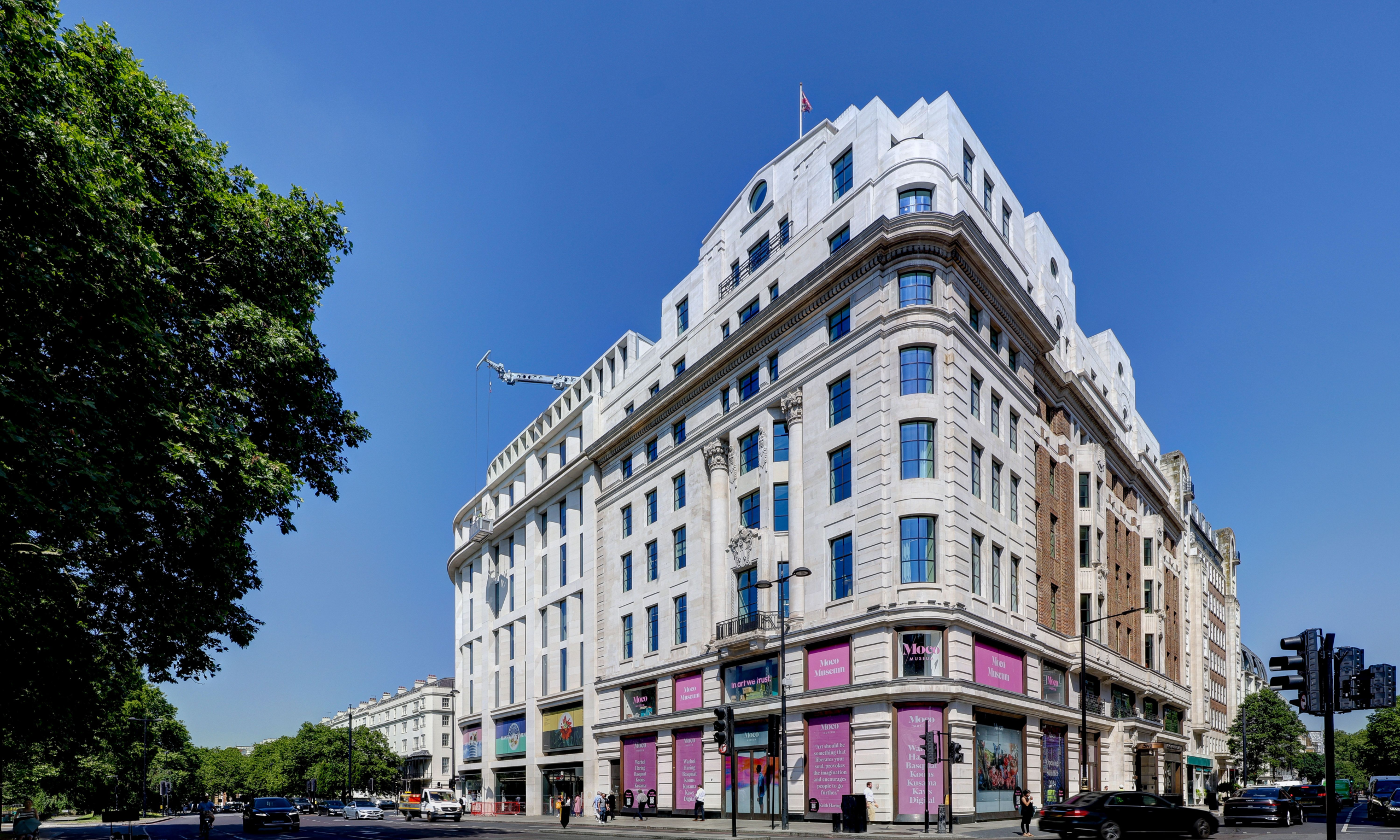The private museum, which has required £15m of investment, will be self-funded through ticket sales
Photo: Matt Chung
The official inauguration is not until 10 September, but London’s newest private museum has already opened its doors to visitors in the heart of the capital.
Moco Museum London, dedicated to modern and contemporary art, is the third outpost of an institution with existing locations in Amsterdam and Barcelona. Each space targets in particular 18-35 year olds seeking art experiences and Instagram opportunities.
The co-founders, Dutch former gallerists Kim Logchies-Prins and Lionel Logchies, had the idea of creating a paid museum after running a commercial space, now closed. “It was called the Lionel Gallery, and at its height regularly welcomed 1,000 visitors a day,” Logchies-Prins says.
“So we thought – ‘what if…’?” she continues. “I have been in the art world for 25 years, and know so many artists and collectors. For me, it’s all about sharing my knowledge and the art with the world.”
Moco’s founders Kim Logchies-Prins and Lionel Logchies had the idea of creating a paid museum after running a commercial space
Courtesy of Moco
The couple created the first Moco, in Amsterdam, in 2016, with the Barcelona museum opening in 2020. According to the founder, the two spaces have already attracted some five million visitors since their creation. She hopes at least 300,000 will come to London in the first full year.
The 25,000 sq. ft space stands in a prime corner spot at Marble Arch and covers three floors, with works by “icons” such as Jeff Koons, Jean-Michel Basquiat, Andy Warhol and Keith Haring on the ground floor. As you come in, you see two sculptures by Koons, one of his mirrored steel “balloon” works along with a wall painting (Balloon Venus; "Dolphin Taz Traschcan 2007; Monkeys (Ladder) [2003]).
On the lower floor are digital art works, a few NFTs and a mirrored immersive environment—Endless Realities by Pulse Interactive. Works by KAWS, Tracey Emin and musician-turned-artist Robbie Williams are on the upper floor, as are pieces by other recognisable names such as the street artists JR, Banksy and Os Gemenos. There is also a large-scale work by Takashi Murakami.
Wall texts explain who the artists are and a little about their practice; there is an audio guide and the staff hand out leaflets with information about the art.
Logchies-Prins says that in the Amsterdam and Barcelona venues, some 60% of the works belong to Moco, with 15% directly sourced from the artists and the remainder on loan from private collectors. “Otherwise they would just be in storage,” she says, adding that loans tend to last for six months. None are for sale, she emphasises.
However, Logchies-Prins continues, the arrangement at the London space is slightly different. It has required heavy investment—in the region of £15m—with most costs going towards expenses such as a 30 years lease (which is breakable after five years) and installation. As a result, some 65% of the works currently on show there are on loan.
Logchies-Prins says that the museum has been created without any outside investment, and that the entire Moco enterprise is funded through ticket sales. In London, prices are £19.90 for adults and free for children under seven. There are membership options, ranging from £50 to £5,000 offering various benefits from free entry for a year to use of the venue for events, depending on the tier. A shop to one side of the museum sells books, postcards and merchandise based on the art displayed. For the moment there is no café, although Logchies-Prins says they have not ruled out creating one.
“I want this to be an art hub for London,” she says. The next exhibition, opening on 11 September, is Healing Frequency by Marina Abramović, including a Chair for Human Use 2015. It will run until 11 March 2025.
London’s new Instagram-friendly ‘museum experience’ opens—with works by Koons, Basquiat and Murakami

